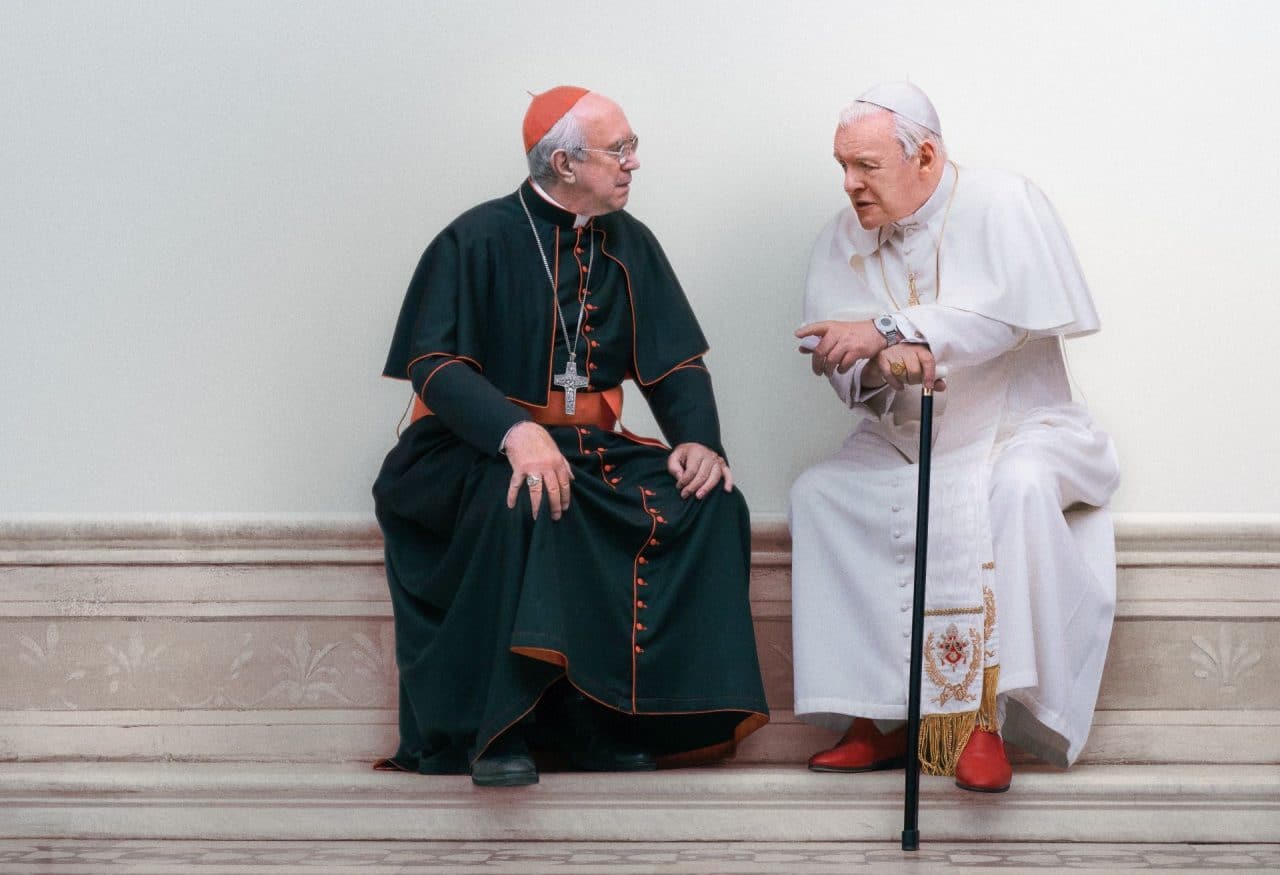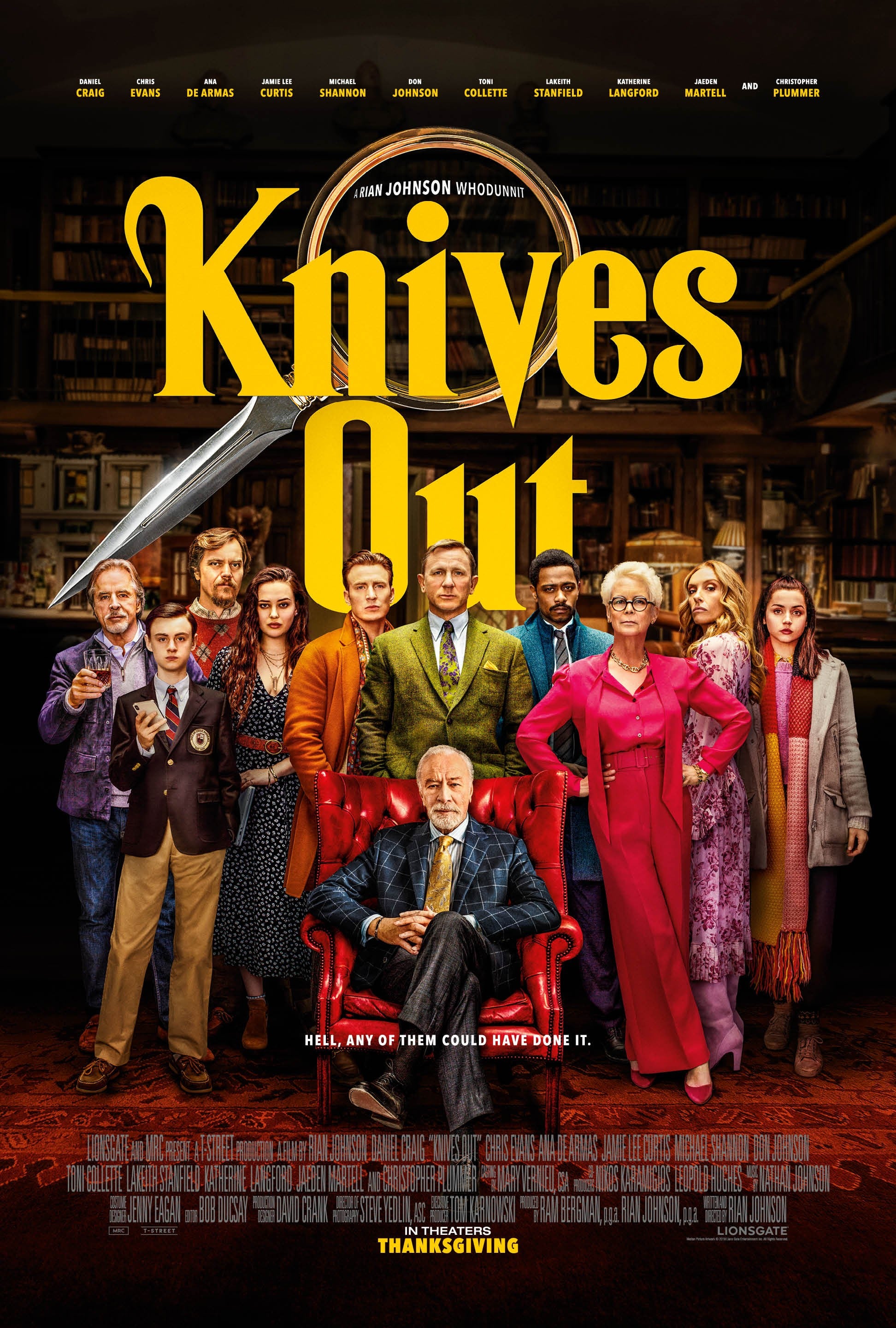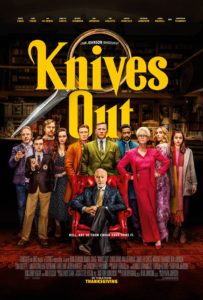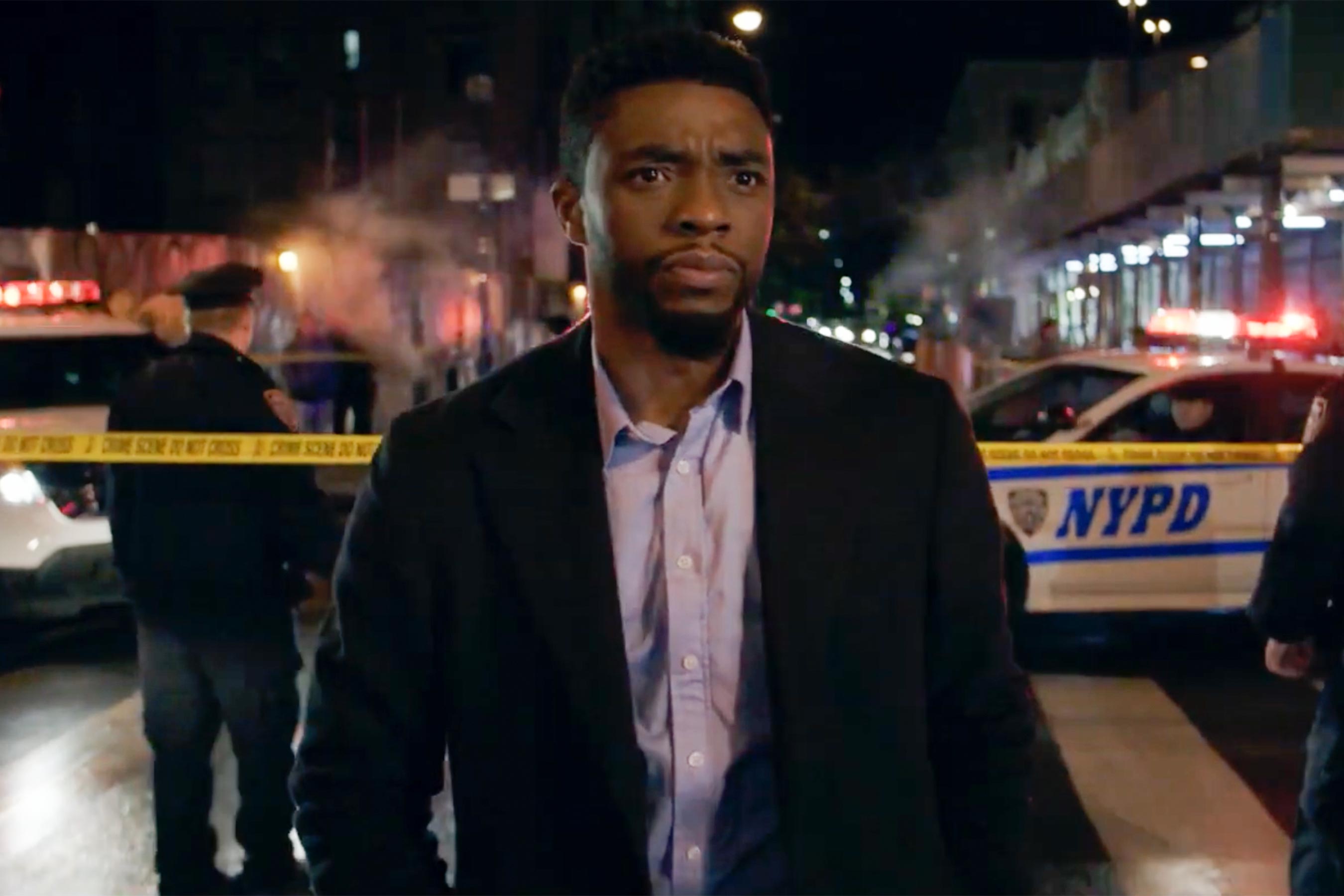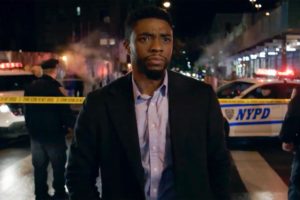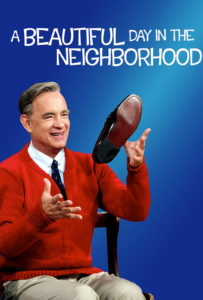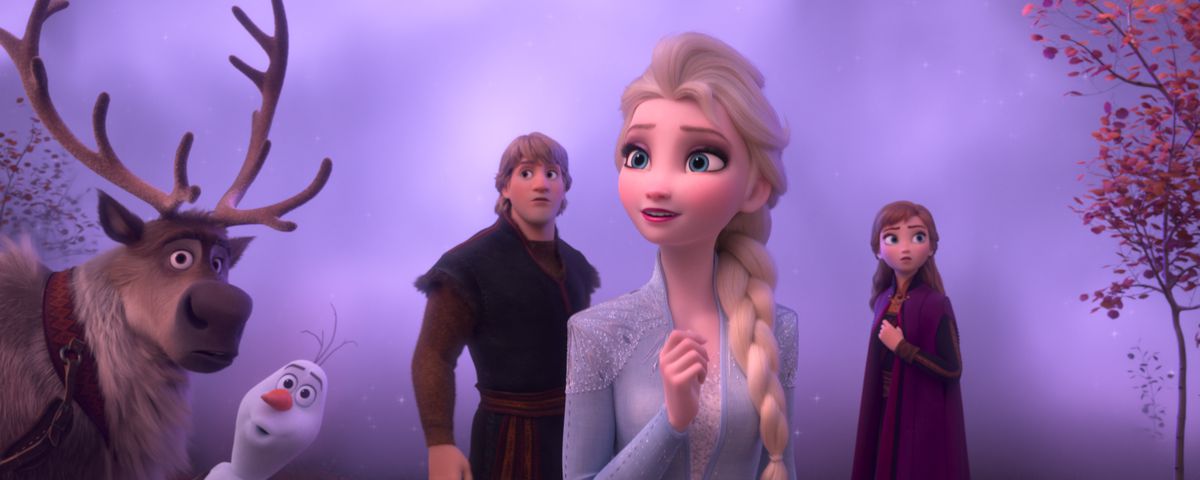The Two Popes
Posted on November 26, 2019 at 5:01 pm
B +| Lowest Recommended Age: | Middle School |
| MPAA Rating: | Rated PG-13 for thematic content and some disturbing violent images |
| Profanity: | None |
| Alcohol/ Drugs: | None |
| Violence/ Scariness: | Images of violence, references to sexual abuse, illness |
| Diversity Issues: | None |
| Date Released to Theaters: | November 27, 2019 |

Sometimes history is made by groups of people in labs or courtrooms or legislative bodies or battlefields. Sometimes history is made by two people talking to each other quietly. We hear those stories less often. It may be that what makes those changes possible is keeping them secret.
We will never know what really happened when Pope Benedict (Anthony Hopkins) became the first supreme pontiff to resign since 1294, selecting the man who became Pope Francis (Jonathan Pryce) as his successor. Everything about it was surprising. Popes have almost always served until death, and the selection process, gorgeously visualized here, is ancient and mysterious. We see with the rows of scarlet-clad cardinals clicking their bright blue pens to cast their votes and the two smoke options, black to show no decision yet, white to show that the new pope has been chosen. The idea of a pope resigning (creating the new position of emeritus pope) and guiding the selection of his successor was unprecedented (well, we don’t know much about what happened in the 13th century, but it was so long ago that “unprecedented” seems appropriate) and so there was no template to follow.
And yet, as it cannot help but be, it is political. The cardinals are only human. During the 2005 selection process, While many votes went for Cardinal Jorge Mario Bergoglio, he was a long shot. There had never been a Jesuit pope, one from the Americas, one from the Southern Hemisphere. Almost all of the popes have been Italian and all have been from Europe since the Syrian Gregory III, who reigned in the 8th century. And so the one selected was a German cardinal named Joseph Aloisius Ratzinger.
More than geography and religious order separated the two men. Pope Benedict was conservative and traditional. Bergoglio is more liberal, more about Catholicism as a call to compassion and engagement with the community. He lived simply and wanted to return being a parish priest. After a few years, he wanted to retire. He wrote to Pope Benedict to ask for permission but before his letter was received, Pope Benedict wrote to ask him to visit. Bergoglio thinks it is to discuss his retirement. Pope Benedict has another career path in mind.
There are some flashbacks, particularly concerning their deepest regrets and most painful failings. But most of the movie is two of the greatest actors of our time playing two of the most formidable and consequential figures of our time, talking to each other about the most foundational issues of faith and philosophy. Sometimes they are indirect. Sometimes they clash in style and substance. But they always exemplify their commitment to their beliefs with grace and kindness. Pope Benedict plays the piano. Bergoglio orders pizza and Fanta. They develop an understanding and a kind of friendship. It is a pleasure and a privilege to be able to eavesdrop on this conversation, and inspiring, too.
Parents should know that this movie includes references to and brief depictions of historical atrocities and references to sexual abuse by priests.
Family discussion: What were the biggest differences in viewpoint between the two popes? What was more important to Pope Benedict than their differences in interpretation and commitment to tradition?
If you like this, try: the documentaries “Pope Francis: A Man of His Word” and “Hesburgh”

